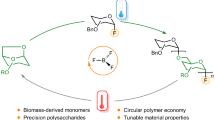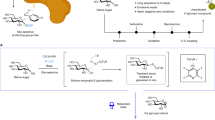Abstract
Although there are numerous methods available to hydrolyze glycans utilizing strong acids, it all requires lengthy steps to obtain quantitative yield. We have developed a new simple one-step method for analysis of amino and neutral monosaccharides of glycoproteins quantitatively. Free monosaccharides were found to be stable during hydrolysis of glycans with 6 N HCI at 80°C up to 2 h. Using this condition, analysis of free monosaccharides hydrolyzed from the bovine fetuin showed sugar composition of Gal: Man: GlcN: GaIN = 13.2: 11.0: 15.5: 2.6, which is closely matched with the reported value of 12.4: 9.6: 17.2: 2.7 (Townsend et al., ABRF News 8: 14, 1997). This method was shown to be applicable to varieties of well-characterized glycoproteins, erythropoietin, fibrinogen and soybean agglutinin. The amounts of sugars released under the condition were very close to the experimental values by other procedures or to the theoretical ones. This condition was found to be suitable for direct sugar analysis of fetuin, which have been immobilized onto polyvinylidene difluoride membrane. Based on these results, it support that the 6 N HCl/80°C/2 h is the simplest method for quantitative analysis of monosaccharide composition of glycoproteins.
Similar content being viewed by others
Article PDF
Author information
Authors and Affiliations
Rights and permissions
This is an Open Access article distributed under the terms of the Creative Commons Attribution Non-Commercial License (http://creativecommons.org/licenses/by-nc/3.0/) which permits unrestricted non-commercial use, distribution, and reproduction in any medium, provided the original work is properly cited.
About this article
Cite this article
Kim, S., Kim, S., Ha, KS. et al. An improved method for quantitative sugar analysis of glycoproteins. Exp Mol Med 32, 141–145 (2000). https://doi.org/10.1038/emm.2000.24
Published:
Issue date:
DOI: https://doi.org/10.1038/emm.2000.24
Keywords
This article is cited by
-
Monosaccharide profiling of silkworm (Bombyx mori L.) nervous system during development and aging
Invertebrate Neuroscience (2016)
-
Type and branched pattern of N-glycans and their structural effect on the chicken egg allergen ovotransferrin: a comparison with ovomucoid
Glycoconjugate Journal (2014)



